Many gardening beginners may fail to notice the difference between pothos and philodendrons, specifically heartleaf philodendrons. Also, some plant stores mistakably label pothos as philodendron or vice versa.
However, despite their close resemblance, pothos, and philodendrons, are different houseplants with slightly varying growing conditions and care needs. Therefore, you must know how to distinguish these two physically (in terms of their appearance).
In this pothos vs. philodendron post, we will look at differences between heartleaf philodendron and pothos regarding physical appearance, growing conditions, and care. We will also give you types, safety to you and your pets, and much more.
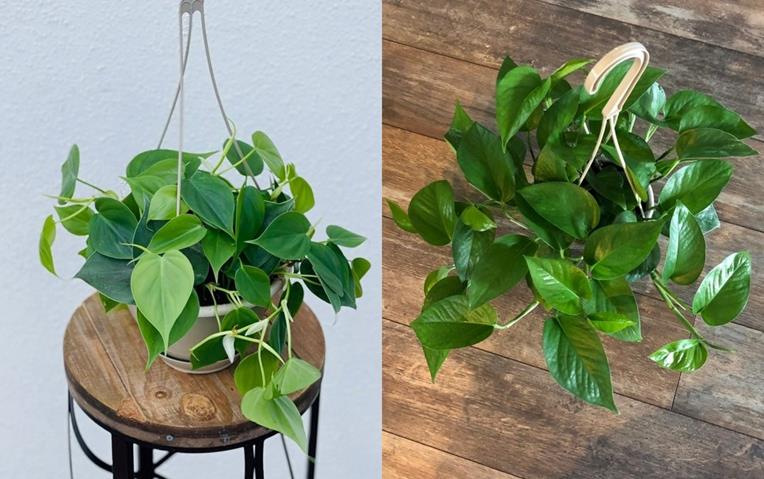
Contents
- Botanical classification
- What will philodendron vs. pothos discuss?
- Physical and morphological differences - Identification
- 1. Leaf appearance, Shape, and texture
- a). texture
- c). Look at the leaf base
- c). Look at the midrib
- d). Apex
- e). Symmetry
- g). Shape and size
- h). Petiole
- i). Stipules
- 2. Philodendrons have cataphyll
- 3. Aerial roots
- 4. Stems
- 5. philodendron vs. pothos care and growing conditions
- a). Growing behavior
- b). Air purification
- c). Growth requirements
- d). Can you plant pothos and philodendron together?
- Toxicity to humans and pets
- Philodendron hederaceum types or cultivars
- 1. Philodendron hederaceum var. oxycardium
- 2. P. hederaceum Brasil or Brazil
- 3. Philodendron hederaceum lime lemon
- Types of pothos or cultivars
- 1. Golden pothos
- 2. Jade Pothos
- 3. Marble queen pothos
- 4. Neon pothos
- 5. Jessenia Pothos
- 6. Manjula pothos
- 7. Pearls and jade pothos
- 8. Cebu blue pothos
- Lemon Lime philodendron vs. neon pothos
- Philodendron Brasil vs pothos
- Silver satin pothos
Botanical classification
Philodendron is a genus name for over 489 accepted flowering plant species, belonging to the Araceae (arum family) native to tropical America with both climbers (vines) and non-climber, i.e., grow upright.
On the other hand, pothos is a common name for Epipremnum aureum, a plant species in the same Araceae family but a different genus. It is native to Moorea in the Society Islands of French Polynesia, central South Pacific Ocean.
Therefore, these two houseplants share the same arum family but belong to different genera, i.e., pothos is a species in genus Epipremnum, and philodendron represents a whole genus with many plant species.
Finally, not all philodendrons resemble pothos. Only the heartleaf philodendron, including its philodendron ‘Lemon Lime’ and Brasil cultivars, look like pothos.
What will philodendron vs. pothos discuss?
To clarify everything and avoid any confusion, here is what the two terms mean:
- Philodendron will synonymously mean heartleaf philodendron (Philodendron hederaceum var. oxycardium or Philodendron scandens var. oxycardium). Other common names are sweetheart plant, parlor ivy, or philodendron (1).
- Pothos will refer to Epipremnum aureum, also known as devil’s vine, devil’s ivy, golden pothos, ivy arum, Ceylon creeper, money plant, hunter’s robe, house plant, silver vine, marble queen, Solomon Islands ivy, and taro vine.
| Philodendron | Pothos | |
| Botanical names | Philodendron hederaceum | Epipremnum aureum |
| Genus | Philodendron | Epipremnum |
| Family | Araceae | Araceae |
| Native habitat | Caribbean and Central America | Moorea |
| Type of plant | Trailing flowering vine | Trailing flowering vine |
Therefore, philodendron vs. pothos looks at differences between these two trendy houseplants, i.e., heartleaf philodendron (P. hederaceum) and pothos (E. aureum). These two bear a lot of resemblances, and it is possible to confuse them.
Note: Scindapsus pictus
We will not include some plants that have either name but belong to other species, such as the Scindapsus pictus, also known as silver philodendron or silver pothos, among other names.
Let us start with philodendron vs. pothos physical and morphological differences before talking about growing conditions and a lot more.
Physical and morphological differences - Identification
The easiest way to differentiate pothos from philodendrons is by looking at their leaves, cataphyll, stems, and aerial roots.
1. Leaf appearance, Shape, and texture
Both these two vines have juvenile and adult leaves. However, when grown at homes as houseplants, they will have only young leaves.
Also, their adult leaves are larger and have different shapes. Therefore, we will be looking at juvenile leaves only.
Secondly, these two houseplants have glossy green heaves except for variegated cultivars, neon pothos, and philodendron lime and lemon cultivars. Also, their Shape is somewhat heart-shaped, and their sizes are comparable except for some cultivars, such as the Cebu blue pothos with an arrow-like shape.
However, looking at each leaf keenly, you will notice some differences, especially in texture, leaf base, symmetry, apex, mid-rib, Shape, and petiole or leaf stalk.
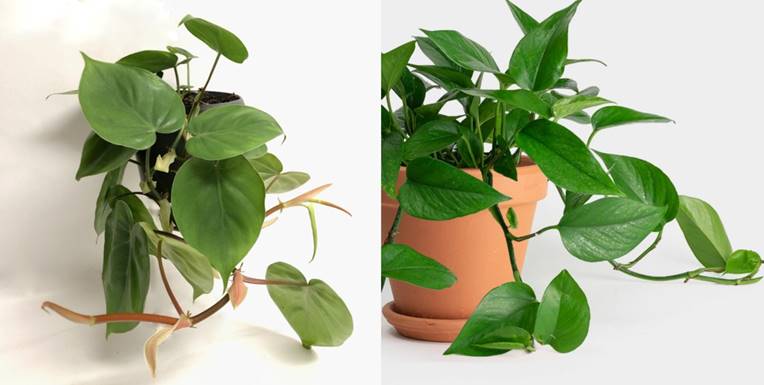
a). texture
If you slide fingers over each of these leaves, you will notice that pothos have a waxy bumpy texture (feels a little rougher) and are thicker.
On the other hand, philodendrons leaf surface texture is softer or smoother and less waxy. Also, they are slightly thinner.
Finally, while both are glossy, pothos leaves are slightly more lustrous, while philodendron leaf is more matte.
c). Look at the leaf base
If you look at the leaf base where the petiole meets the leaf, you will notice that the philodendrons curve more inwards, resembling the top of the heart shape.
However, the pothos leaves have less pronounced curves where the leaf blade joins the petiole.
c). Look at the midrib
devil’s vine leaves have a more indented and well-defined midrib, making the leaf surface look more ridged like a gardening spade, while philodendron midrib is less indented, making the whole leaf a little flatter.
d). Apex
Another noticeable difference in leaves is that the philodendrons have a more dramatically pointed leaf apex while devil’s ivy’s, is not as pointy.
e). Symmetry
If you were to divide these two leaves in the middle, along their midrib, philodendrons would have a more symmetrical shape, with the two halves more or less the same.
However, for pothos, the halves are less likely to be symmetrical. They may be asymmetrical.
g). Shape and size
Philodendron hederaceum var. oxycardium or heartleaf philodendron perhaps gets its name because the leaf shape is more heart-shaped. It is rounder, the leaf base where the petiole meets the leaf blade is more lobed or curvier. Heartleaf philodendron leaves measure 2 to 4 inches in size.
On the other hand, while they are also heart-shaped, they are not as round and don’t have pronounced lobes at the leaf base. Also, pothos leaves are slightly larger, measuring between 4 and 8 inches in size.
h). Petiole
Another distinction between these two houseplants is the Shape and appearance of their petiole or leaf stalk (joins leaf blade to the vine).
If you keenly look at the stalks of these two, you will notice that philodendrons have a smoother, thinner, and rounder.
On the other hand, pothos has grooved or indented petiole. Therefore, it is not round, and running your fingers along the petiole will make you feel the groove.
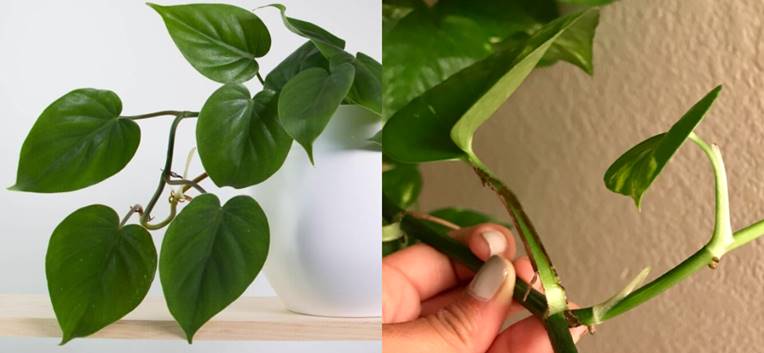
Philodendrons have a smoother, thinner, and rounder, while pothos has a grooved petiole with edges that turn brown as the plant matures.
Also, the indent is more pronounced as you move closer to where it attaches the vine, and its edges turn brown or dark as the leaf matures. The groove exists because of how the leaves grow.
i). Stipules
Stipules are small leaf-like appendages found at the petiole stalk. They are part of the leaf. Please don’t confuse them with the cataphyll.
As North Carolina State University Extension Gardener notes, pothos is distinguishable from Philodendron hederaceum due to the “absence of conspicuous free stipules on new growth.”
Therefore, this means the devil’s vine is fused to the stems, while in philodendron, stipules are free (unfused).
2. Philodendrons have cataphyll
The other obvious distinction is that philodendrons have a reduced, green, leaf-like, waxy sheath that encases or surrounds a new unfurling leaf while pothos don’t have it.
Cataphylls grow from where the stem and petiole base meet, and their roles are to protect the unfurling leaf and photosynthesize to provide food to the new growing leaf until it can grow on its own.
Once a new leaf is formed, the cataphylls will curl away, die and fall off, i.e., they will start turning brownish before drying up and falling, leaving a scar on the stem at their point of attachment.
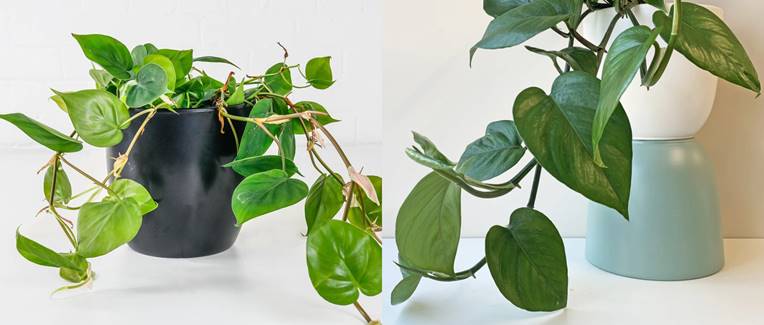
Therefore, check for the presence of cataphylls on newly growing leaves or any scar marks just behind where the leaf attaches to older leaves. If present, you have a philodendron and not, it is a pothos.
Note
There are two types of cataphylls in philodendrons. The first one is the deciduous cataphylls that dry up and fall vining species such as heartleaf philodendron.
The other one is the persistent cataphylls. It is common on appressed climbers and epiphytic philodendrons, and it doesn’t fall off since these plants have very short internodes. Therefore, when they dry, they form a fibrous attachment.
3. Aerial roots
Both pothos and philodendrons vines have aerial roots that grow from the nodes. These roots help that helps them climb (attach) and collect nutrients and moisture.
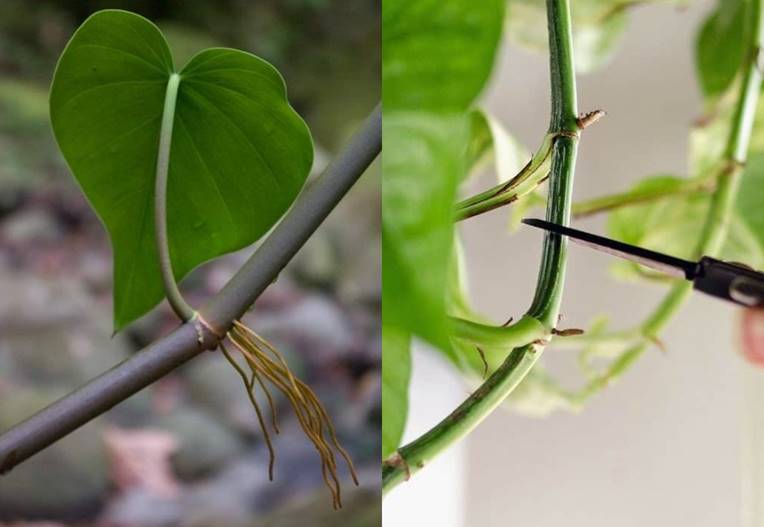
However, pothos houseplants have one thicker, dark aerial root, one on each node. In contrast, philodendrons may have several, usually 2 to 6 aerial roots per node. Also, they are taller and thinner.
4. Stems
The other difference is how the stems appear. Pothos stems are thicker and have a color that resembles their leaves (not the variegated).
On the other hand, Philodendron stems tend to be slightly slender, very flexible stems with a greenish-brown color.
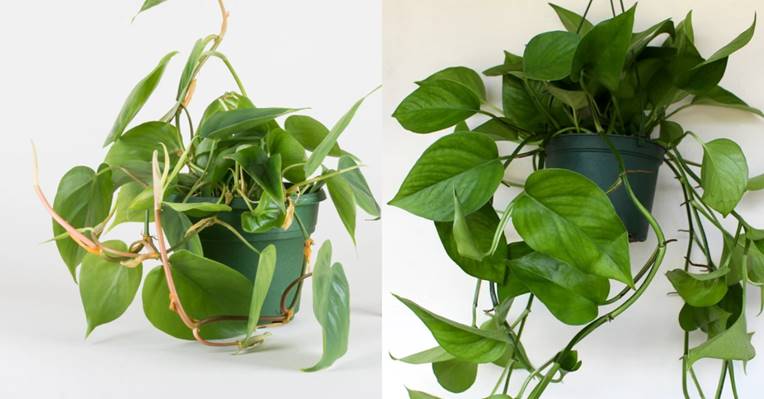
5. philodendron vs. pothos care and growing conditions
Besides the above differences between pothos and philodendrons, it is good to tell you the differences in their growth behavior, requirements, and care. It will help you decide whether you go for pothos or philodendron.
a). Growing behavior
These two are climbers in the wild and will trail on other plants, telephone poles, buildings, etc.
As houseplants, they are both hanging baskets or pots, and you can allow them to trail moss poles and trellises for trailing.
b). Air purification
According to NASA, they are both ranked among the best indoor air purifying, which is another reason you need to buy them.
c). Growth requirements
While they are similar, the exact growing requirement and care vary, especially if you consider extremes
For instance, pothos requires slightly warmer conditions and a more significant number of light philodendrons.
Here is a summary of pothos plant vs. philodendron growing and care:
| Heartleaf philodendrons | Pothos | |
| Hardiness zone | 11 and 12 (USDA) | 11 and 12 (USDA) |
| Mature size | Smaller than pothos with vines grow up to 4 feet or more | Vines grow 20 to 40 feet long and 3 to 6 feet wide |
| Soil | Well-drained, slightly acidic (pH 6.1 to 6.5), but can tolerate soils slightly outside these pH ranges. | They need loamy, well-drained soil that is slightly acid to neutral soil, typical pH of 6 and 7. |
| Growth rate | Fast-growing but grow slower than pothos, i.e., up to 10 cm per week in an ideal environment (temperature, humidity, lighting, moisture, and so on). | If grown under the same conditions, pothos will grow faster than philodendron, with an average growth rate of about 12 cm per week. |
| Light requirement | Bright indirect light but can adapt to a medium or low light area where they will grow slowly. They can tolerate much lower light than pothos. However, avoid direct sunlight as it will cause foliage to burn. | Pothos prefers bright indirect light but can tolerate low to medium light. They can handle a little direct sunlight, but too much will scorch the leaves, while very low light may result in improper coloration of some varieties. |
| Temperature | Their ideal growth temperature is 65 to 80 degrees Fahrenheit during the day and at least 55 degrees Fahrenheit during the night. | It thrives in slightly higher temperatures (warmer areas) than philodendrons, with the ideal range being 65 to 85degrees Fahrenheit. Temperatures beyond 90 °F will slow growth |
| Humidity | They require relative humidity above 40% and tolerate higher amounts. However, very high humidity may encourage leaf fungus. | Require higher humidity than philodendrons, typically at least 50%, with an ideal humidity being 50% to 70% range. However, they tolerate lower humidity. |
| Watering | Less infrequent than pothos. Water when top 50-75% of the soil is dry | Require slightly more watering. Water when the top 50% of your potting mix is dry. The water requirement may vary from one variety to another. |
| Food | Feed once a month during growing months (spring and summer) using liquid fertilizers for houseplants. | Feed once or after two months, depending on the variety. Some require liquid, while others general-purpose indoor plant fertilizer. |
| Propagation | Cutting but are easier to propagate | Cutting is not as easy to propagate as philodendrons |
d). Can you plant pothos and philodendron together?
Yes. You can plant pothos and philodendron together. The various growing requirements of these two and you will agree they are very similar and close.
However, there are variations, for example, variegated pothos requiring a little more indirect light to form the variegations well.
Also, if you decide to grow them together, ensure you don’t use extreme conditions that one may tolerate while the other will fail. For instance, with humidity as low as 40%, philodendrons are ok while devil’s ivy requires 50% or more.
Toxicity to humans and pets
Both pothos and philodendrons are toxic to humans, cats, dogs, and other pets because they have insoluble calcium oxalates (raphides).
When ingested, the microscopic, needle-like insoluble calcium oxalate crystals will injure, pierce or embed on the skin, digestive tract, or oral mucosa (skin lining inside), causing a lot of localized irritation and pain.
Typical symptoms you may notice on your cats and dogs include the following:
- Severe or intense discomfort, irritation, or burning of the oral cavity, including the lips, mouth, or tongue
- Salvation or drooling
- Swallowing difficulties
- Reduced appetite or unwillingness to eat
- Mouth pawing by dogs and cats
- In rare cases, the mouth, lips, and tongue may swell.
Therefore, irrespective of whether you have photos or philodendron, you deserve to know that they are both poisonous to humans and pets. So, take precautions if you have children or pets.
Finally, all parts of these plants are toxic, including leaves, roots, stems, seeds, flowers, or fruits.
Philodendron hederaceum types or cultivars
If you would like to know more about the various P. hederaceum cultivars, there are the common ones you should know.
1. Philodendron hederaceum var. oxycardium
This evergreen vine is native to Central America and the Caribbean and closely resembles the non-variegated green pothos, and has been the basis of our pothos vs. philodendron.
Its cataphylls grow up to 19 cm long, and the semi-glossy leaves are heart-shaped and grow between 2 to 4 inches long.
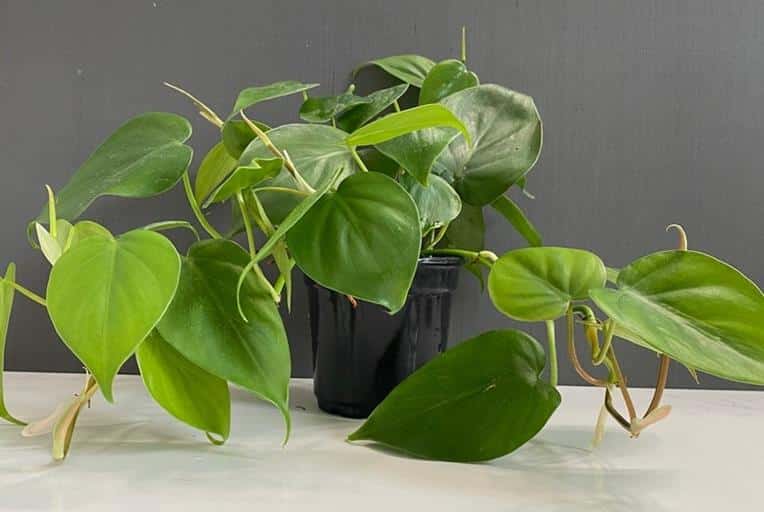
2. P. hederaceum Brasil or Brazil
P. hederaceum cultivar Brasil is native to Brasil, Mexico, and West Indies. It has 2 to 4 inches long glossy heart-shaped leaves with a lime green variegation that may be yellowish at the leaf center.
Additionally, the leaves may have a bronze tinge, and it has other features, including cataphyll and aerial roots typical to P. hederaceum.
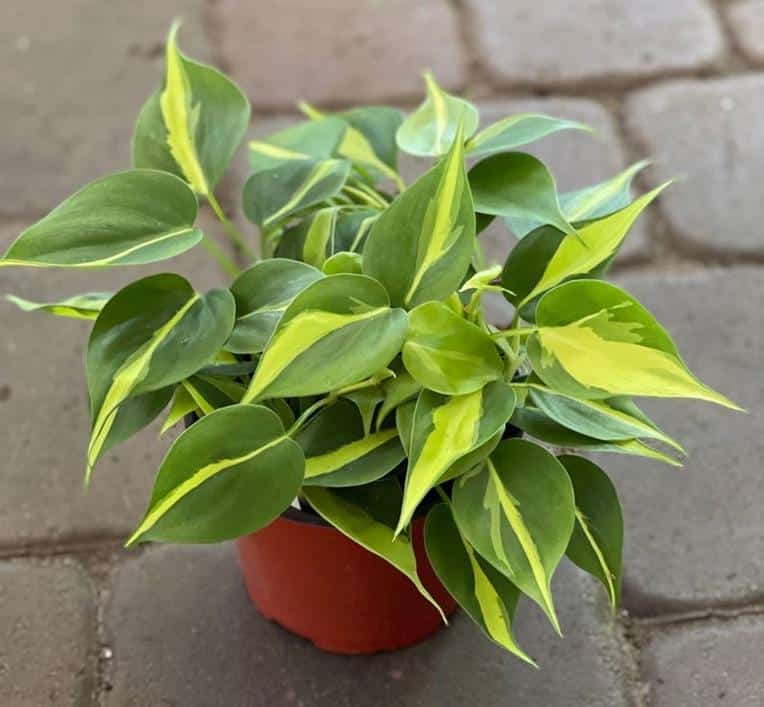
Finally, its other names include sweetheart plant or Vilevine, shared by cultivars in this species.
3. Philodendron hederaceum lime lemon
This cultivar is distinguished by its bright yellowish-green foliage and hence the lime lemon name. Its heart-shaped leaves will brighten your space and improve your mood. Like other cultivars, it is and is easy to care for and even for beginners.

This species is often confused with Philodendron Oxycardium (Neon Cordatum) with has similar foliage color but is a different species altogether.
Types of pothos or cultivars
Pothos has many cultivars, unlike P. hederaceum, with a few cultivars. There are those with green leaves, neon, and variegated ones. Before we go to these varieties, here is a video to tell you more about golden pothos.
Here are the common pothos types and cultivars:
1. Golden pothos
They are the most common pothos you will find in most homes. They have heart-shaped green leaves with a cream, golden or yellowish splash. They are aggressive growers given the right conditions and exceptionally resilient.
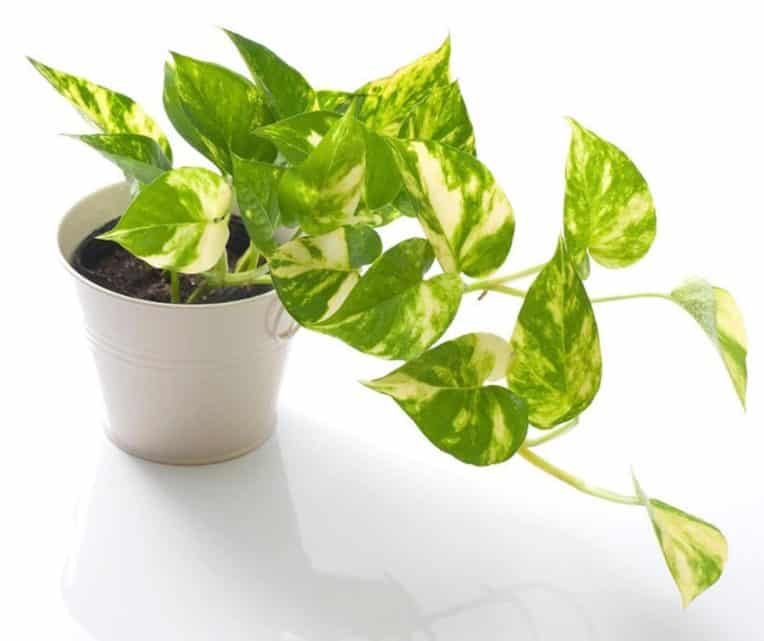
2. Jade Pothos
They closely resemble golden pothos but have a solid dark green color. These houseplants closely resemble the Philodendron hederaceum var. oxycardium, and you can grow them even in areas with lower indirect light since they are not variegated.
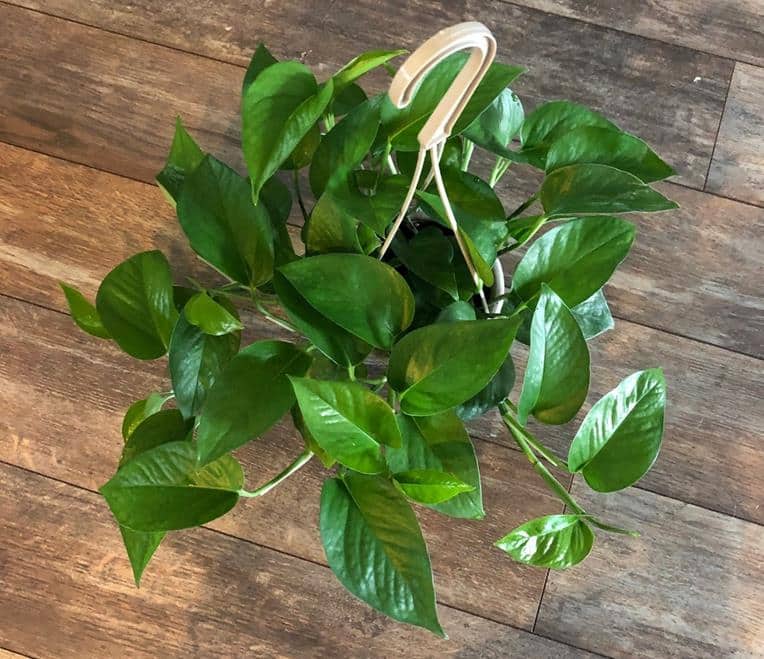
3. Marble queen pothos
These are a widespread, early variety of the E. Aureum and heart-shaped, white and green patched or streaked leaves. Their foliage resembles golden pothos, except for the creamy white patches with varying intensities and similarly colored stems.
Like variegated plant species, they have lesser chlorophyll, grow much slower, and require slightly more indirect light. Otherwise, they won’t grow properly.
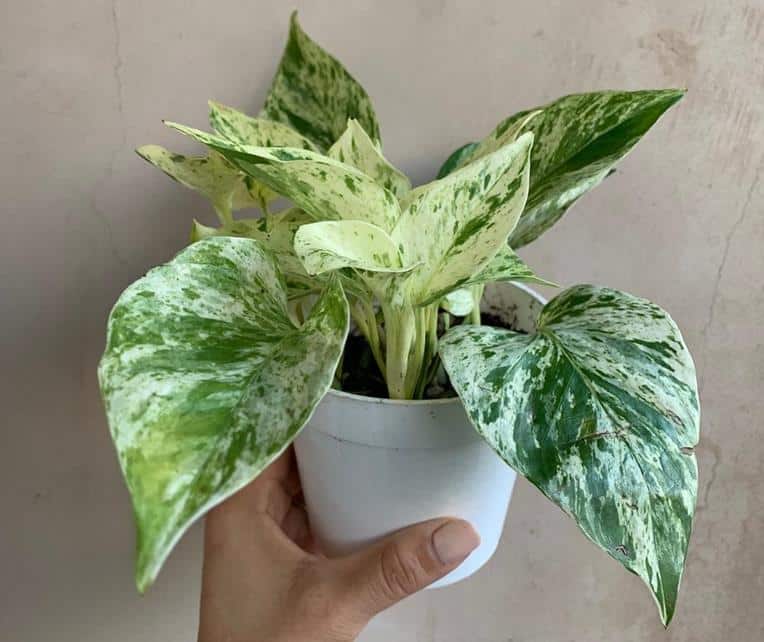
4. Neon pothos
The neon pothos has non-variegated golden yellow, neon, or bright chartreuse heart-shaped leaves. Older leaves have deeper colors while newly growing have more brilliant coloration.
If you want to get most of their color, ensure you grow them in a place with bright, indirect light.

5. Jessenia Pothos
Jessenia pothos has heart-shaped emerald green leaves with lime-green or chartreuse heavy markings with a pattern that resembles Marble Queen.
Also, as it is with Marble Queen, each leaf varies from another. They grow slowly and are rare to find.
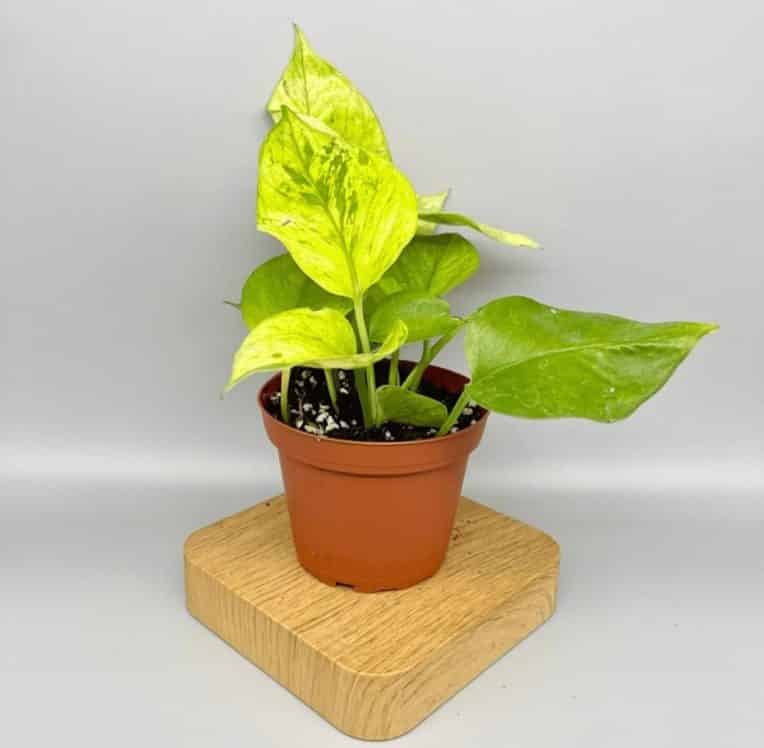
6. Manjula pothos
The Manjula Pothos is a University of Florida patented variety with broader, heart-shaped green leaves with cream, silver, light green, or white variegations or splashes with varying intensities.
Leaves don’t resemble each other, and even the creamy areas may have different colored spots or speckles. Also, the leaf edges are somewhat wavy or curvy, and they don’t stay flat.
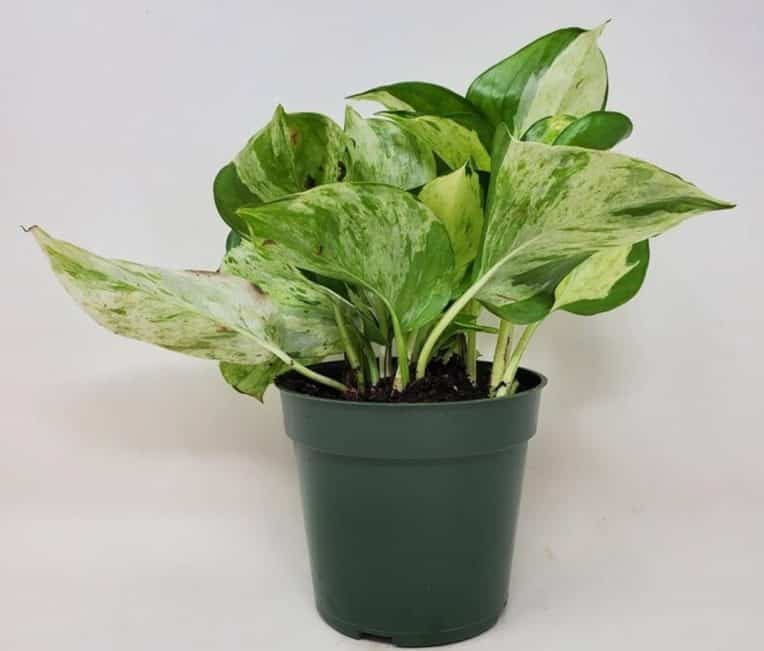
7. Pearls and jade pothos
The pear and jade pothos is a University of Florida patented cultivar with green leaves and silvery-gray and white variegations, prominent towards the edges and not the center.
Their heart-shaped leaves are smaller, they grow slower, and the white patched areas have silver-gray or green-toned markings.
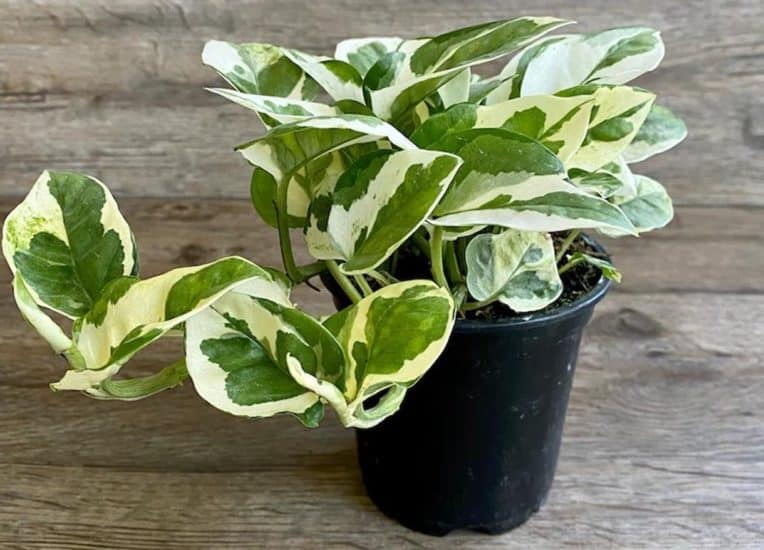
8. Cebu blue pothos
Cebu blue pothos has arrow-shaped, blue-green leaves with a slightly metallic sheen. These cultivars produce larger leaves and visibly veined patterns and bumps.
They have high demand, require warmer environments to grow an adult leaf, and take longer to mature.
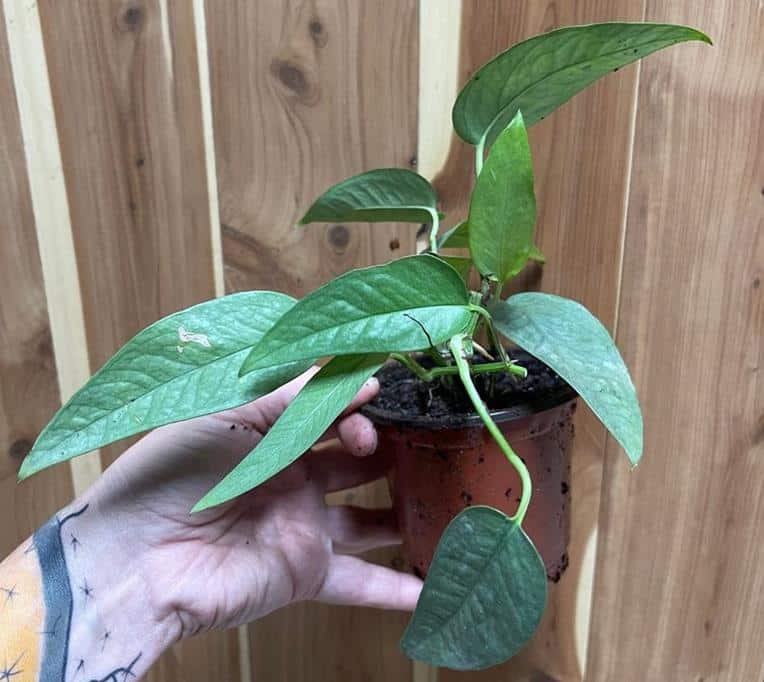
Lemon Lime philodendron vs. neon pothos
If you have looked at neon pothos and philodendron lemon-lime, they closely resemble each other, and you may not know the differences. Their differences boil down to the difference between philodendron vs. pothos except for colors.
As the name suggests, Lemon Lime philodendron has yellowish-green foliage, while neon pothos has neon or golden-yellow leaves that tend to be dull as the leaves mature.
Also, both leaves are heart-shaped, and the rest of the differences, as already seen discussed.
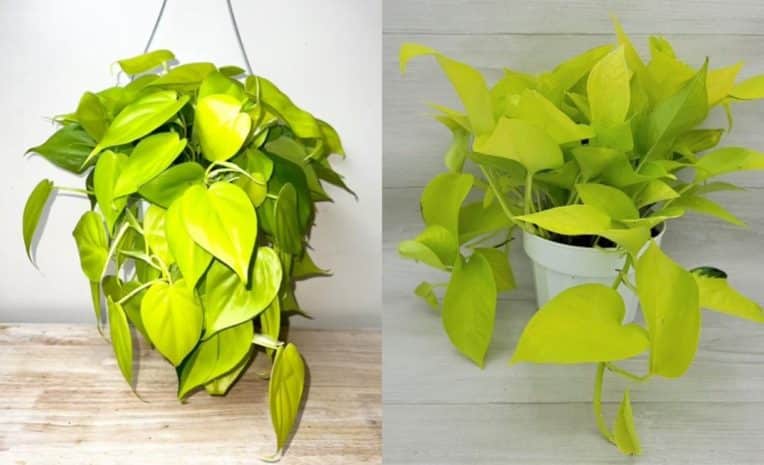
Philodendron Brasil vs pothos
Again, if you consider philodendron Brasil and pothos, you will notice that the differences between these two plants come to play. For instance, unlike pothos, philodendron Brazil has cataphylls, a rounder, and more heart-shaped leaf. Also, their aerial roots differ, and so on.
However, the most distinguishing thing is on the philodendron Brasil leaf is the yellowish or lime green variegation along the center. Several cultivars of pothos have variegation, but they look different.
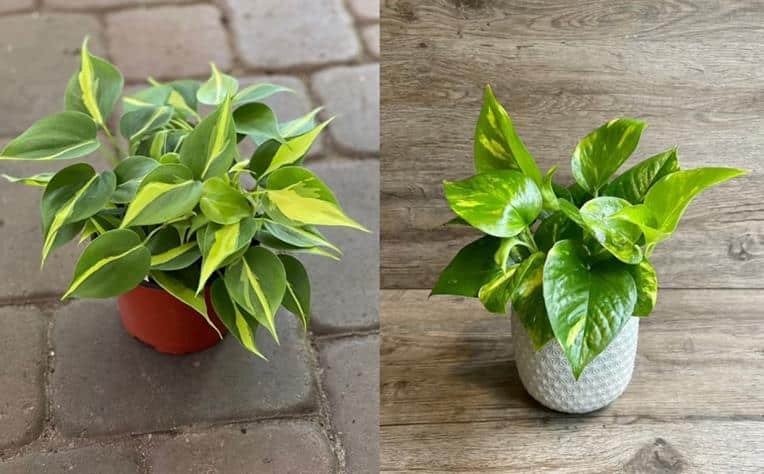
Silver satin pothos
The silver philodendron or vine (Scindapsus pictus), also known as silk, satin, or silver pothos, belongs to a different genus, i.e., the Scindapsus. Therefore, it isn’t true pothos or philodendron.
Silver or satin pothos features heart-shaped, dark-green foliage with silver speckles. The leaves are slightly smaller than most of the other cultivars. For brightest silver markings, ensure they get bright indirect light.
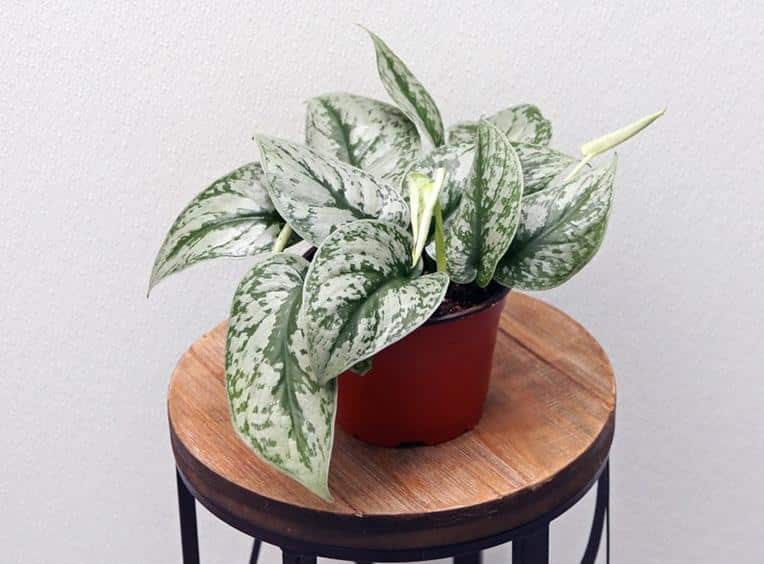

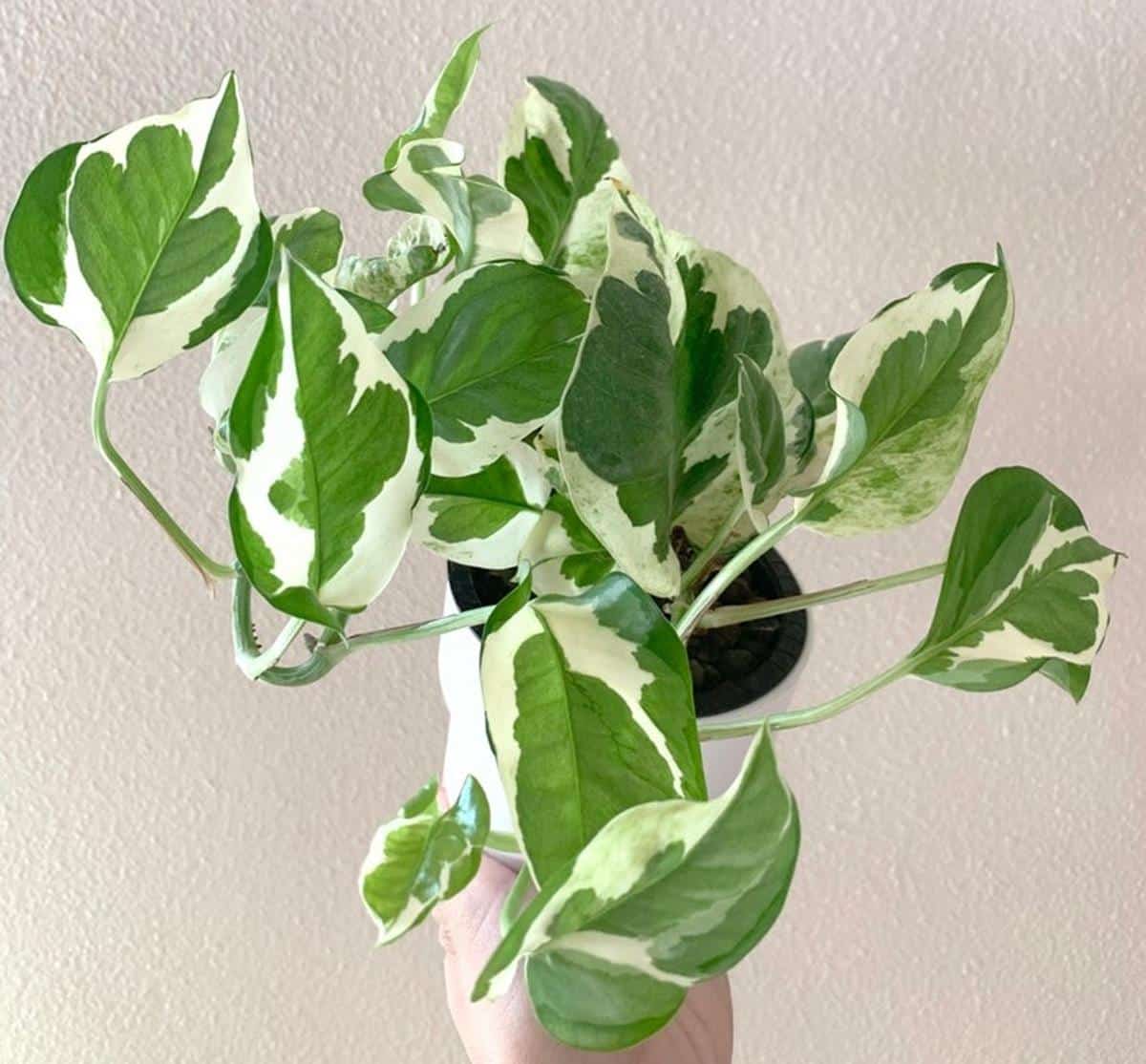
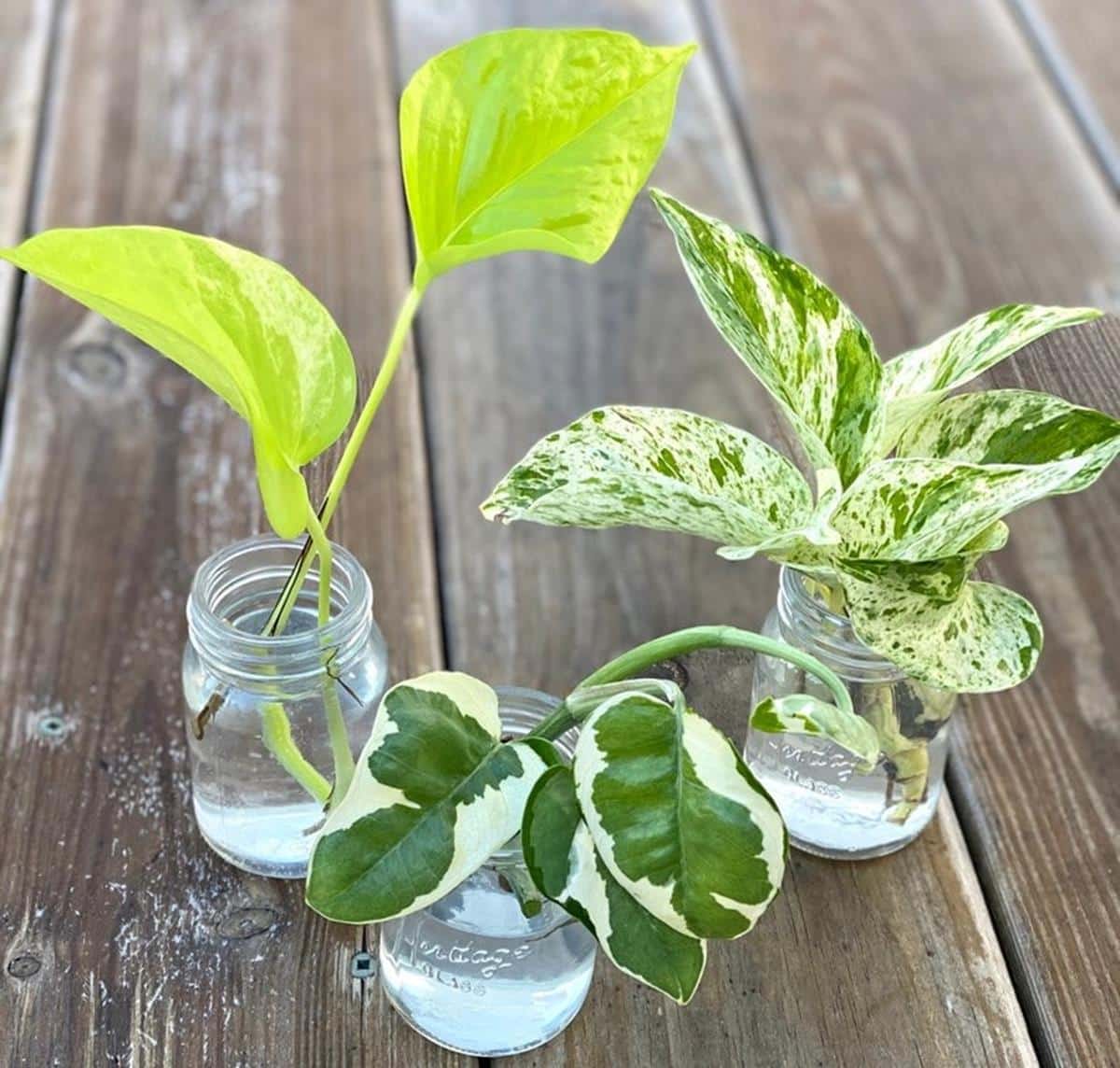


Leave a Reply